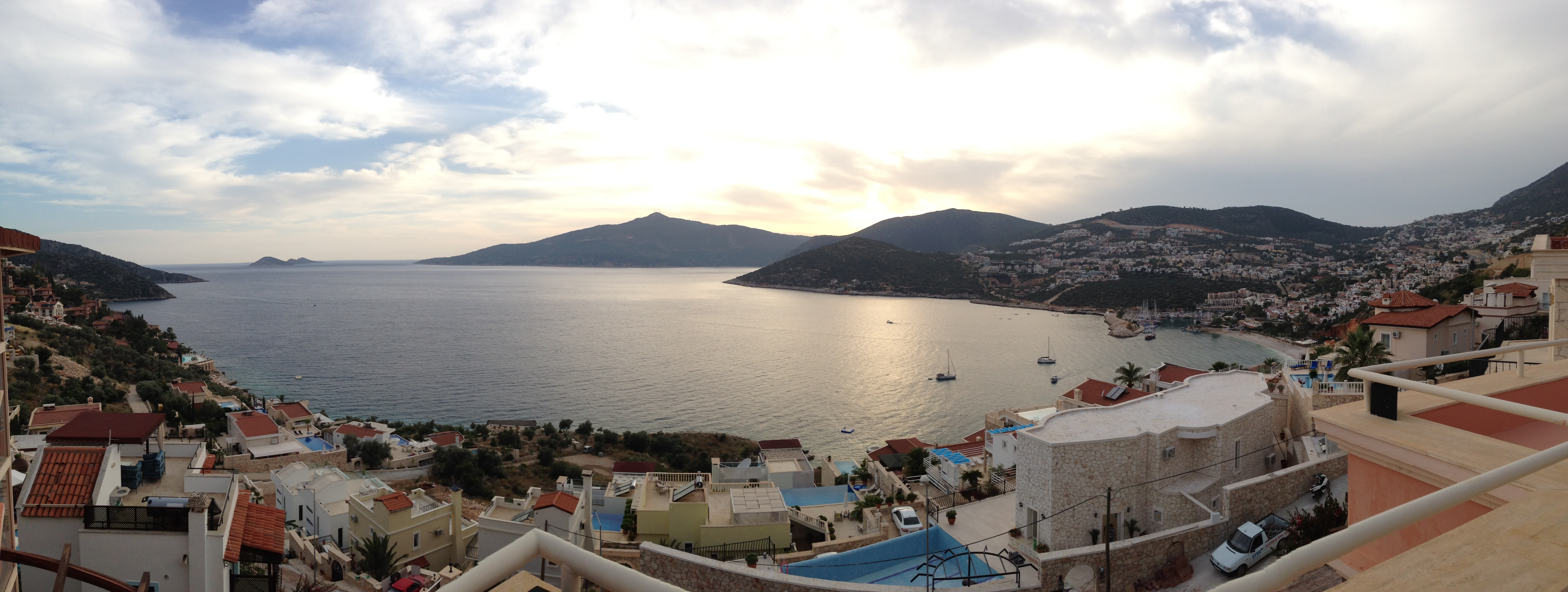Nemrut Dağı overview
The tomb at Nemrut Dağı was built by King Antiochus I of the Commagene Empire who lived during the 1st century BC. The Commagene Empire was small and confined to southeast Turkey, but Antoichus, descended from Greeks and Persians, saw himself as a god and commissioned a tomb to match this belief. He built his tomb on top of a mountain in order to be close to the gods.

The site has an East Terrace and a West Terrace, each on opposite sides of the tumulus where Antiochus is presumed to be buried (they have yet to find his tomb). The East Terrace consists of a series of seated statues whose heads fell down at some point in time and are now arranged in front of their respective bodies. The statues are of a lion, an eagle, and several gods including Zeus, Hercules, Tyche, and Antiochus himself as a god. The West Terrace contains more scattered heads of gods and animals as well as some slabs with reliefs on them. Reaching the terraces involves about a 20 minute walk from the parking lot along a rock path that consists of long steps. The walk isn’t too strenuous but it would be challenging for someone with knee or other mobility problems.

The landscape around Nemrut Dağı is stunning. You can see why someone might choose this as their burial place and why they would think it brought them closer to the gods. You are surrounded by mountains in all directions and see no evidence of civilization aside from the tomb. It has a very mystical air to it. Plan to spend about two hours at the site (including the climb to and from the parking lot).

Other sites near Nemrut Dağı
If you are planning a trip to Nemrut Dağı there are several other nearby, related sites that are also worth a visit.
Arsameia
Called Eski Kale in Turkish, this was an important city in the Commagene empire and is the burial place of Antiochus’s father, Mithradates. The most famous object here is a relief showing Mithradates shaking hands with Hercules. The site contains some other reliefs, a few scattered ruins and more breathtaking views of the surrounding area.

Karakuş Tumulus
This tumulus marks the burial site of Antiochus’s wife, Isias. The tumulus is surrounded by three columns, including one topped by an eagle from which the site gets its name (karakuş= black bird). You can see the Nemrut Dağı burial mound from the Karakuş tumulus.
Bridge of Septimius Severus
This ancient Roman bridge spanning the Cendere stream is in excellent condition. You can’t drive over the bridge but you can park and walk across.

Logistics for visiting Nemrut Dağı
Getting there
The archaeological site is located at the top of a 2,100 meter mountain so it involves a bit of a climb to get there. There are two ways to approach the site: from Kahta in the south or from Malatya in the north. When I visited I came from the southern approach and stayed in Kahta. The site is 40kms from Kahta but it will take you about an hour to make the drive. Driving from Malatya will take about 2.5 hours.
Kahta is a small city in Adiyaman province in southeastern Turkey. You can drive here from the Cappadocia region in around 7 hours. You can also fly into the city of Adiyaman (ADF), 30 minutes west of Kahta, via daily flights from Ankara and Istanbul. Another option is to fly into Malatya (MLX), which also has daily flights from Istanbul and Ankara, and reach Nemrut Dağı from the northern route. The closest village to Nemrut Dağı is Karadut, 12kms from the site.
To explore Nemrut Dağı I recommend either joining a tour or renting your own car. There is technically a public transit route but it’s a little complicated: you can take a minibus from Kahta to Karadut and then either hike up or hitch a ride from one of the pansiyon owners in Karadut. On my trip to Nemrut Dağı we used Euphrates Tours, based in the Cappadocia region. Using a tour company certainly makes your life easier, particularly in this pretty remote region that has fewer services than you will find out west. However, you can certainly do it on your own: roads are decent and the major sites are pretty well marked.
Where to stay
Karadut has a handful of basic pansiyons, Kahta has a few serviceable hotels, and there are a wider range of accommodations in both Adiyaman and Malatya. When I visited, I stayed at the Zeus Hotel in Kahta. It is probably the best of the bunch in Kahta; the highlight is that it has a nice outdoor pool and garden area. Rooms and bathrooms are basic but clean and the breakfast buffet was pretty meagre. That said, it has a convenient location and I would stay there again.
When to go
The mountain typically has snow in the winter so it is best to visit Nemrut Dağı from late spring to early fall.
Many people make a big deal of visiting Nemrut Dağı at sunrise in order to see the stone figures lit up by the early morning light. I personally don’t think this is necessary and think it would be a bit difficult. Not only would you have to leave you hotel insanely early to make it there for sunrise, you would need to make the walk from the parking lot to the site in semi-darkness which would make it more challenging. It also tends to be crowded and somewhat chilly at sunrise. My recommendation is to visit at a normal time of day.


